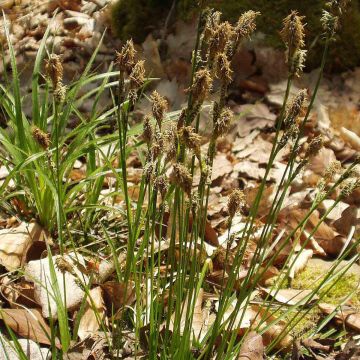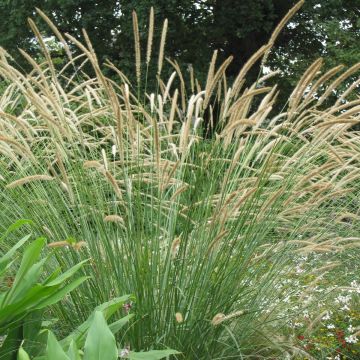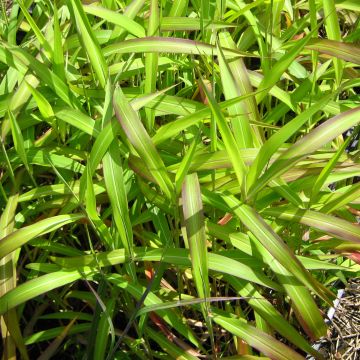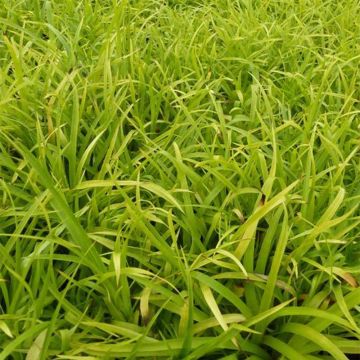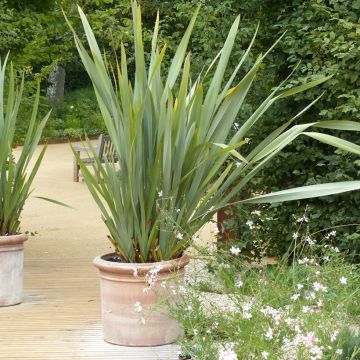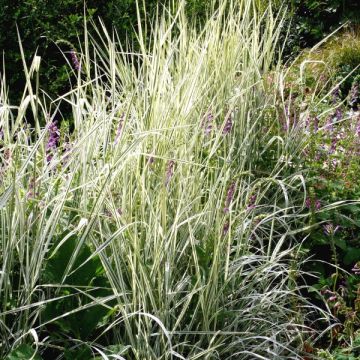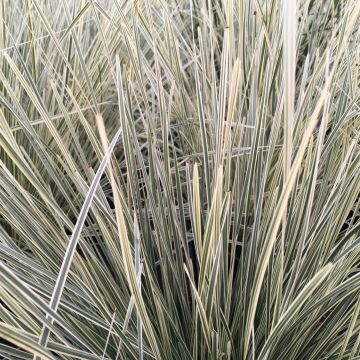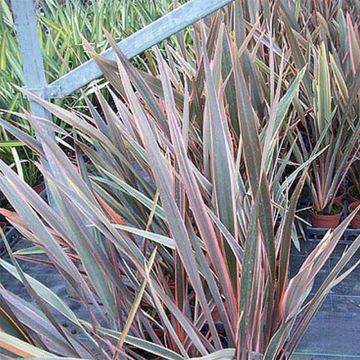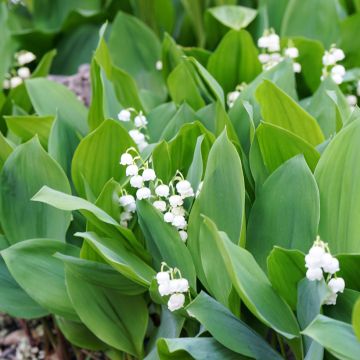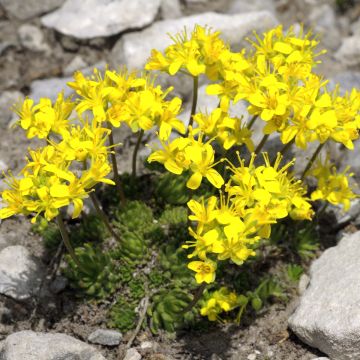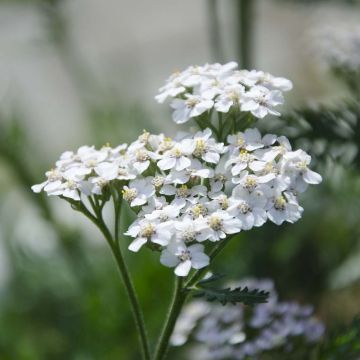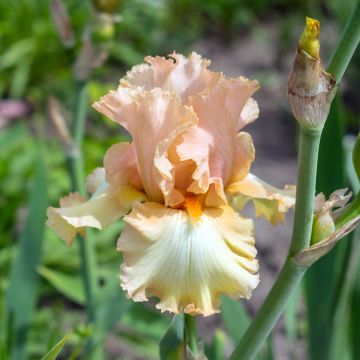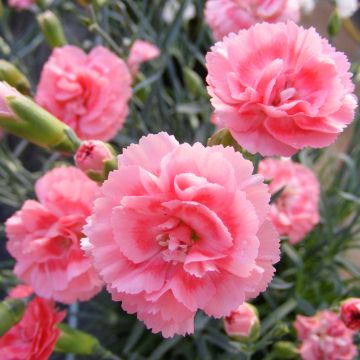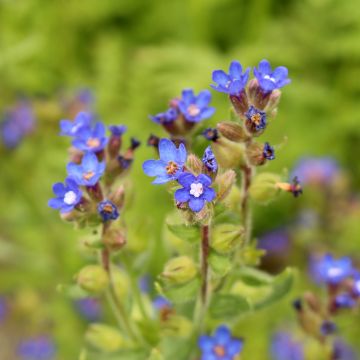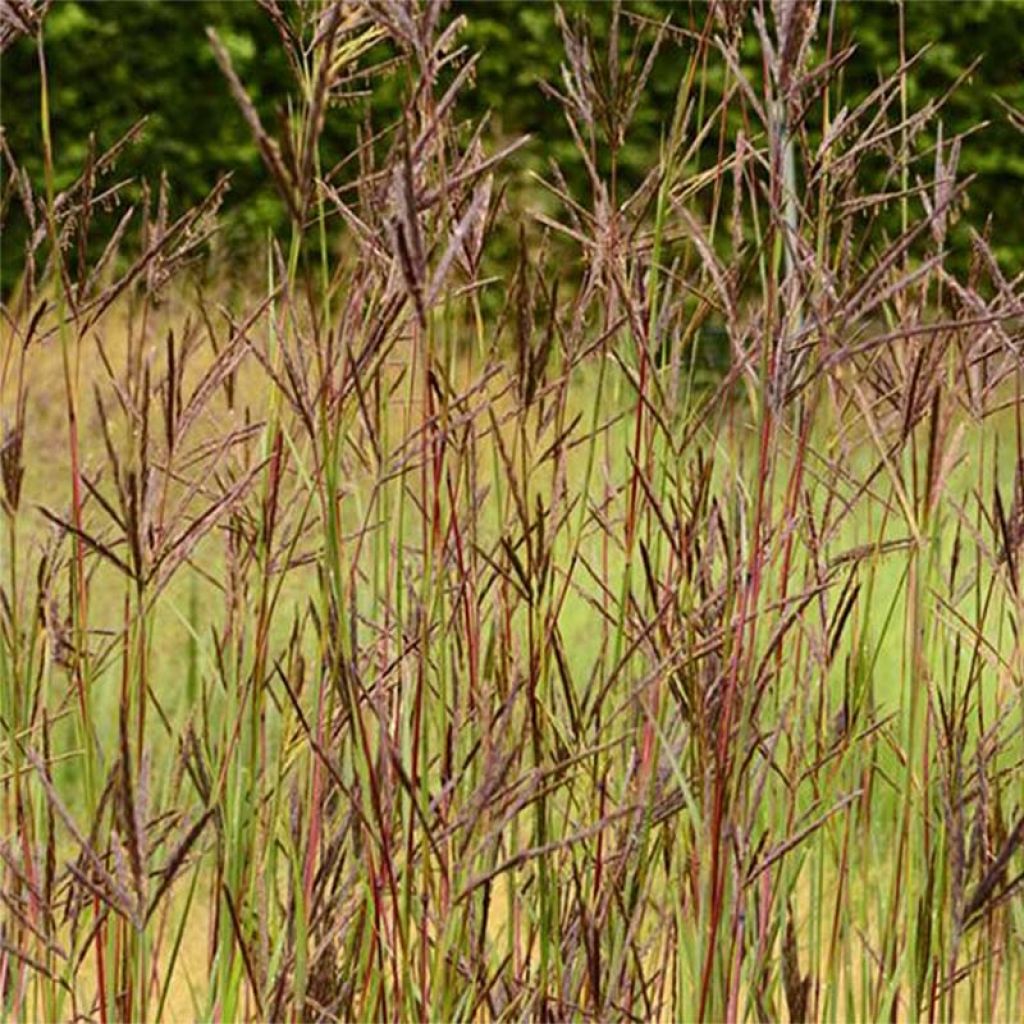

Andropogon hallii Purple Konza
Andropogon hallii Purple Konza
Andropogon hallii Purple Konza
Sand bluestem, Sand hill bluestem
Replanted as soon as the buckets were received. I already have some small shoots, I can't wait to see them grow. Thank you very much.
Stephanie, 28/03/2020
This item cannot be shipped to the selected country
Delivery charge from €5.90
More information
Schedule delivery date,
and select date in basket
This plant carries a 12 months recovery warranty
More information
We guarantee the quality of our plants for a full growing cycle, and will replace at our expense any plant that fails to recover under normal climatic and planting conditions.
From €5.90 for pickup delivery and €6.90 for home delivery
Express home delivery from €8.90.
Does this plant fit my garden?
Set up your Plantfit profile →
Description
Andropogon hallii 'Purple Konza' is a particularly colourful form of the Sand Bluestem, a North American grass aptly named in its native land due to its bluish vegetation. It forms an upright tuft of medium size, sturdy against the wind, with stems that turn blue-violet to reddish and long leaves that turn reddish-brown-coppery at the end of the season. Its late summer flowering is quite spectacular, with long plume-like inflorescences that turn reddish-brown with coppery highlights. Superb in wild or meadow-like flower beds, this grass is particularly suitable for poor, even dry soil.
Andropogon hallii belongs to the large family Poaceae, the 'true' grasses. This perennial herbaceous plant is native to the hot and dry regions of the United States, where it can be found in a vast area ranging from the Mississippi River to the west to the Rocky Mountains, as well as in southern Canada and the Chihuahua region in northern Mexico. It is a very hardy species that thrives in sandy and poor, even limestone soils. This tall and resilient grass is easy to cultivate in our gardens. Once well established, it withstands dry summers quite well.
Andropogon Purple Konza slowly forms a tightly compact tuft with a vertical but flexible habit, reaching about 1m (3ft) in height and 60-70 cm (24-28in) in width. Sometimes slow to establish and non-invasive, this grass proves to be durable and vigorous over time. Its stiff stems, called culms, are more or less bluish and speckled with reddish-brown. They bear thin and long flattened leaves of a bluish greyish green colour. In autumn, this foliage gradually takes on shades of red, purple, brown, and copper. Flowering occurs in August-September, depending on the climate. At the tips of the floral stems, inflorescences develop, reaching 1.20m (4ft)-1.30m (4ft) above the ground. These spikes are adorned with a multitude of small yellow flowers that turn orange and reddish-brown and become covered in bristles. The deciduous foliage dries up in late autumn and reappears in spring.
Plant this Andropogon hallii 'Purple Konza' in a large border or in a flower bed alongside other robust plants that populate the great prairies of North America: echinaceas, coreopsis, rudbeckias, asters, mugworts, sunflowers (helianthus), gauras, Penstemon barbatus, verbena Buenos Aires, agastaches, baptisias... Like all grasses, it is indispensable for bringing lightness to neighbouring plants, whether perennials or bushes.
Report an error about the product description
Andropogon hallii Purple Konza in pictures
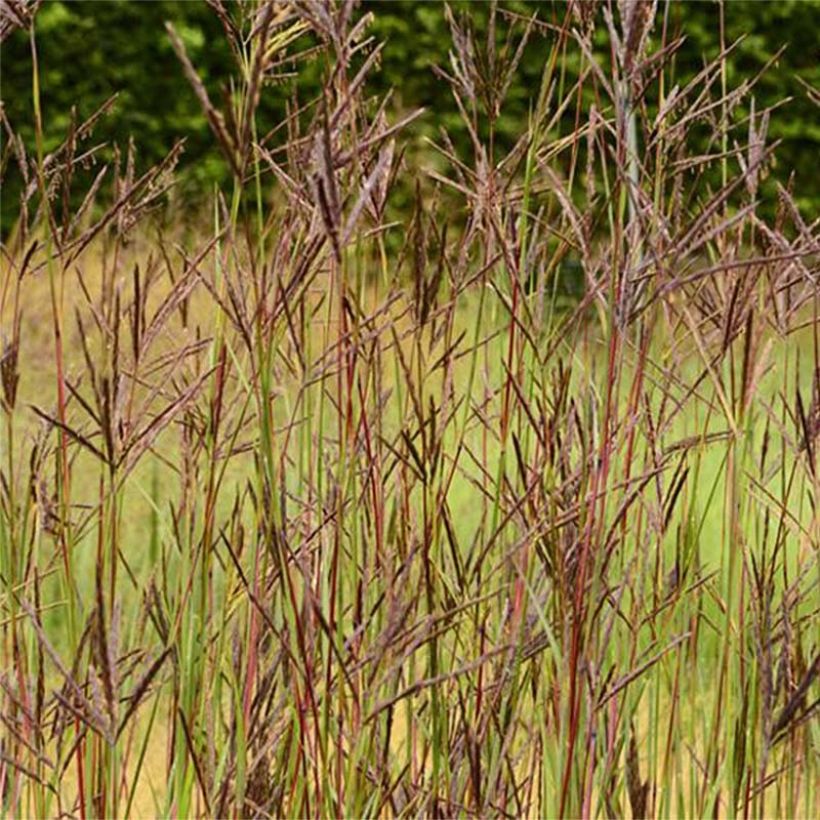

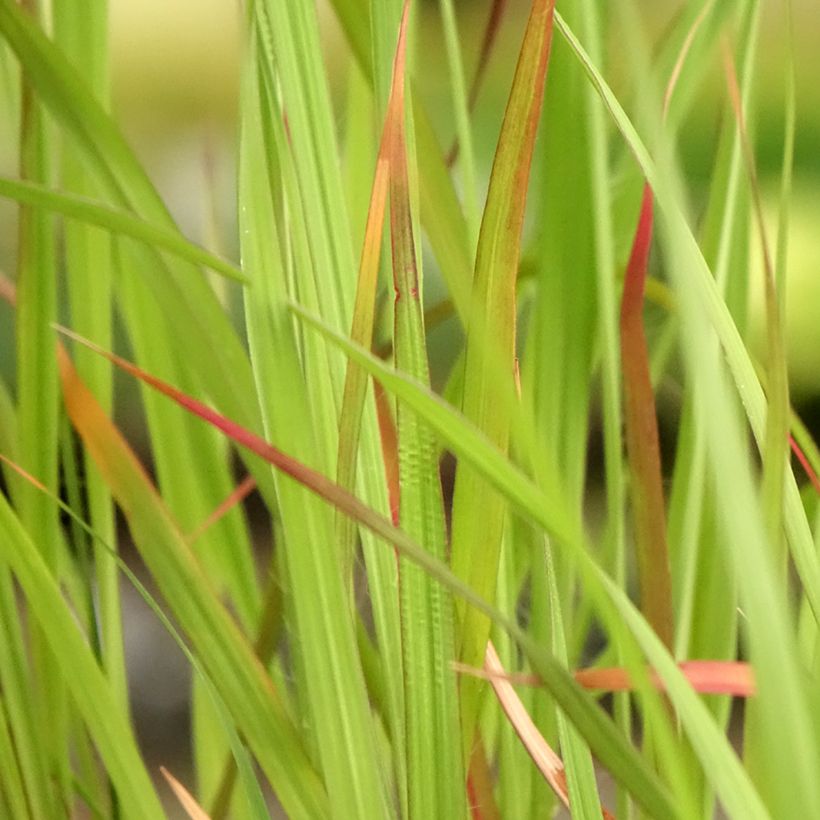

Flowering
Foliage
Plant habit
Botanical data
Andropogon
hallii
Purple Konza
Poaceae
Sand bluestem, Sand hill bluestem
North America
Other Ornemental grasses A to Z
Planting and care
Andropogon Purple Konza prefers sandy and poor soils, but it grows in any well prepared and loosened garden soil, even if it is rather rocky and limestone. A soil that is too rich leads to significant rapid growth which makes the plant less resistant to wind and rain, causing it to lay flat. This grass requires a very sunny position. It is well adapted to regions with contrasting climates, experiencing cold winters and hot summers. Once well established, it will tolerate periods of moderate drought.
Planting period
Intended location
Care
-
, onOrder confirmed
Reply from on Promesse de fleurs
Spring flowering perennials
Haven't found what you were looking for?
Hardiness is the lowest winter temperature a plant can endure without suffering serious damage or even dying. However, hardiness is affected by location (a sheltered area, such as a patio), protection (winter cover) and soil type (hardiness is improved by well-drained soil).

Photo Sharing Terms & Conditions
In order to encourage gardeners to interact and share their experiences, Promesse de fleurs offers various media enabling content to be uploaded onto its Site - in particular via the ‘Photo sharing’ module.
The User agrees to refrain from:
- Posting any content that is illegal, prejudicial, insulting, racist, inciteful to hatred, revisionist, contrary to public decency, that infringes on privacy or on the privacy rights of third parties, in particular the publicity rights of persons and goods, intellectual property rights, or the right to privacy.
- Submitting content on behalf of a third party;
- Impersonate the identity of a third party and/or publish any personal information about a third party;
In general, the User undertakes to refrain from any unethical behaviour.
All Content (in particular text, comments, files, images, photos, videos, creative works, etc.), which may be subject to property or intellectual property rights, image or other private rights, shall remain the property of the User, subject to the limited rights granted by the terms of the licence granted by Promesse de fleurs as stated below. Users are at liberty to publish or not to publish such Content on the Site, notably via the ‘Photo Sharing’ facility, and accept that this Content shall be made public and freely accessible, notably on the Internet.
Users further acknowledge, undertake to have ,and guarantee that they hold all necessary rights and permissions to publish such material on the Site, in particular with regard to the legislation in force pertaining to any privacy, property, intellectual property, image, or contractual rights, or rights of any other nature. By publishing such Content on the Site, Users acknowledge accepting full liability as publishers of the Content within the meaning of the law, and grant Promesse de fleurs, free of charge, an inclusive, worldwide licence for the said Content for the entire duration of its publication, including all reproduction, representation, up/downloading, displaying, performing, transmission, and storage rights.
Users also grant permission for their name to be linked to the Content and accept that this link may not always be made available.
By engaging in posting material, Users consent to their Content becoming automatically accessible on the Internet, in particular on other sites and/or blogs and/or web pages of the Promesse de fleurs site, including in particular social pages and the Promesse de fleurs catalogue.
Users may secure the removal of entrusted content free of charge by issuing a simple request via our contact form.
The flowering period indicated on our website applies to countries and regions located in USDA zone 8 (France, the United Kingdom, Ireland, the Netherlands, etc.)
It will vary according to where you live:
- In zones 9 to 10 (Italy, Spain, Greece, etc.), flowering will occur about 2 to 4 weeks earlier.
- In zones 6 to 7 (Germany, Poland, Slovenia, and lower mountainous regions), flowering will be delayed by 2 to 3 weeks.
- In zone 5 (Central Europe, Scandinavia), blooming will be delayed by 3 to 5 weeks.
In temperate climates, pruning of spring-flowering shrubs (forsythia, spireas, etc.) should be done just after flowering.
Pruning of summer-flowering shrubs (Indian Lilac, Perovskia, etc.) can be done in winter or spring.
In cold regions as well as with frost-sensitive plants, avoid pruning too early when severe frosts may still occur.
The planting period indicated on our website applies to countries and regions located in USDA zone 8 (France, United Kingdom, Ireland, Netherlands).
It will vary according to where you live:
- In Mediterranean zones (Marseille, Madrid, Milan, etc.), autumn and winter are the best planting periods.
- In continental zones (Strasbourg, Munich, Vienna, etc.), delay planting by 2 to 3 weeks in spring and bring it forward by 2 to 4 weeks in autumn.
- In mountainous regions (the Alps, Pyrenees, Carpathians, etc.), it is best to plant in late spring (May-June) or late summer (August-September).
The harvesting period indicated on our website applies to countries and regions in USDA zone 8 (France, England, Ireland, the Netherlands).
In colder areas (Scandinavia, Poland, Austria...) fruit and vegetable harvests are likely to be delayed by 3-4 weeks.
In warmer areas (Italy, Spain, Greece, etc.), harvesting will probably take place earlier, depending on weather conditions.
The sowing periods indicated on our website apply to countries and regions within USDA Zone 8 (France, UK, Ireland, Netherlands).
In colder areas (Scandinavia, Poland, Austria...), delay any outdoor sowing by 3-4 weeks, or sow under glass.
In warmer climes (Italy, Spain, Greece, etc.), bring outdoor sowing forward by a few weeks.

































